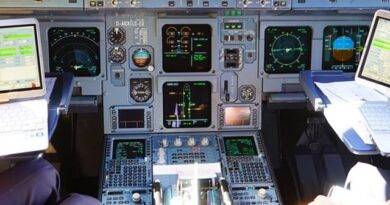Understanding the Airspeed Indicator (ASI) in Aircraft
The Airspeed Indicator (ASI) is a crucial flight instrument that helps pilots determine the speed of an aircraft relative to the surrounding air. It measures airspeed in knots, miles per hour (mph), or kilometers per hour (km/h), depending on the aircraft.
How It Works
The ASI operates by comparing two types of air pressure: static pressure from air at rest and dynamic pressure from air moving against the aircraft. These pressures are collected through the pitot-static system. The pitot tube, usually mounted on the aircraft’s exterior, collects ram air (dynamic pressure), while the static port measures ambient air pressure (static pressure). The difference between these pressures drives a diaphragm inside the ASI, which moves a needle to indicate the airspeed on a calibrated scale (Pilot Institute; Wikipedia).

Types of Airspeed
- Indicated Airspeed (IAS): The airspeed shown directly on the ASI without adjustments for air density or altitude changes. It is critical for flight safety, particularly during takeoff and landing (SKYbrary).
- True Airspeed (TAS): This is the aircraft’s actual speed through the air, adjusted for altitude and temperature differences. TAS is higher than IAS at higher altitudes due to thinner air (AeroToolbox).
- Calibrated Airspeed (CAS): CAS corrects IAS for instrument and positional errors, providing a more accurate reading (Wikipedia).
Reading the ASI
The ASI features color-coded markings that highlight critical speed ranges:
- White Arc: The flap operating range, with the lower end showing the stall speed with flaps extended.
- Green Arc: Normal operating range, indicating safe speeds for general flying.
- Yellow Arc: Cautionary range, where pilots should only operate in calm air conditions.
- Red Line: The never-exceed speed (V_ne), indicating the structural limit of the aircraft (AeroToolbox; Pilot Institute).
Why the ASI is Vital
The ASI is key to safe flying, helping pilots avoid stalling, maintain appropriate speeds during different phases of flight, and safely maneuver the aircraft. For instance, flying too slowly can lead to a stall, while exceeding certain speeds could cause structural damage (Pilot Institute; SKYbrary).
Conclusion
The Airspeed Indicator is indispensable for flight navigation and safety, offering real-time data on the aircraft’s speed relative to the air. It provides pilots with critical information to ensure smooth operations, avoid stalls, and manage safe landings. By understanding how the ASI works and its different airspeed readings, pilots can confidently navigate through various flight conditions.
For more technical details, visit sources like AeroToolbox and Pilot Institute (AeroToolbox; Pilot Institute).


